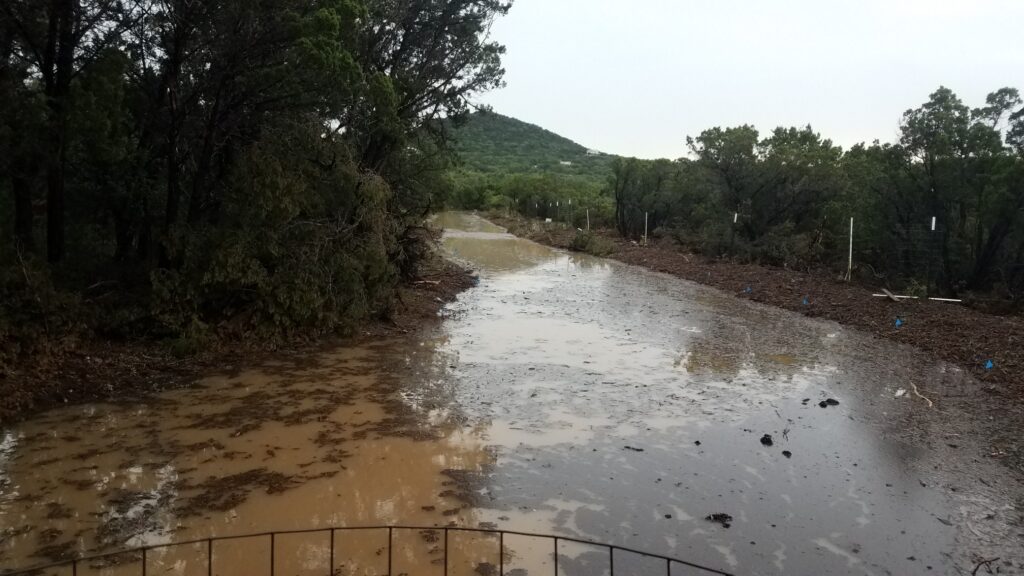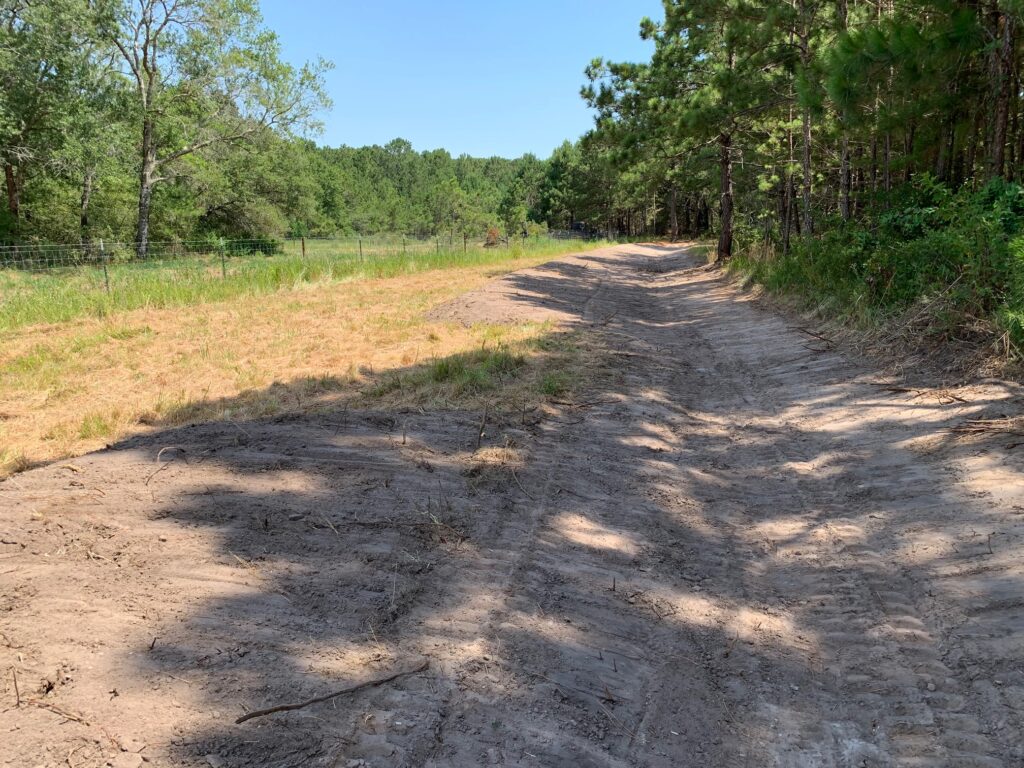
Culvert Catchers
Welcome to the Drought Proof Texas Blog! It is a very dry time in Texas right now. At my home in Blanco, Texas we have received 6 inches of precipitation in the past 10 months. With our average annual rainfall being over 30 inches, we are at a huge deficit. Fortunately, we were blessed with a 1.5-inch rain a few weeks ago. It was a hard rain that lasted only for one hour, and it came down hard enough to create some stormwater runoff. This was a moment we have been preparing for. Today we learn about Culvert Catchers.
Stormwater Runoff
Stormwater runoff increases in areas with hard surfaces like roads, parking areas, and buildings. All of these engineered systems are designed to drain water away from critical infrastructure to mitigate water damage. Road systems are notorious for creating huge amounts of runoff. Today we discuss how to turn that flooding liability into a ground water asset.
Most roads that cross the slope of the land have a drain on the uphill side of the road. The drain keeps water from the slope uphill from washing onto the driving area. Usually, the water is drained to the lowest spot in the road and then released into a drainage area. This is good, you don’t want water on the road, and you don’t want to introduce too much water into an area that is not appropriate. In most cases the water is carried under the road via a culvert pipe. These pipes serve their purpose but often cause erosion downstream of the pipe. When the designed drainage is not sufficient to carry the excess amount of water during flash flood events or even small stormwater runoff events, these pipes can be overwhelmed and water flows over the road. Sometimes that means adding more culverts and sometimes it is appropriate to spread out the energy of that water and add culvert pipes uphill of the main drain.
All of this water flowing off hard surfaces and channelization of the water creates a great opportunity to do some soil and water conservation. I call these soil and water conservation terraces, and when paired with culvert pipes I call them “Culvert Catchers”. Downhill of the culvert pipe a soil and water conservation terrace will catch sediment, mitigate erosion, catch runoff, recharge groundwater. They also provide a garden bed like planting area for trees and native grasses.
Water Conservation
The image below shows how road runoff can be redirected and used to benefit our very dry landscape here in central Texas. Stormwater runoff from the hillside and the road was originally carried straight downhill to the river. We installed a miniature dam in the roadside drain, and a culvert pipe that takes the water to the other side of the road. When water flows out of the culvert pipe it hits a barrier of stones that breaks up the energy of the water to help prevent erosion. Then the water is caught by a terrace that slows, spreads, and sinks the water into the ground. The terrace is then covered with a layer of compost, seed, and mulch. Eventually it is also planted with nice native trees. We still had a lot of water flowing down the roadside drain, so we added another culvert and Culvert Catcher downhill of the first one. In the last 1.5-inch rain we caught all of that road runoff and had no overflow, whereas before the water went straight to the river and was lost from the property.
The next image shows one of our larger newly built Culvert Catchers and soil and water conservation terrace flooding for the first time. This soil and water conservation terrace catches storm water runoff from a 24-inch diameter culvert pipe. The water used to go straight downhill to the creek instead of servicing the land. Now all of the rainfall and runoff is made more effective and soaks the land with beneficial moisture that lasts in the soil for weeks. This extra water in the landscape is critical during times of drought. Localized ground water recharge is a huge benefit to struggling live oaks that are on the verge of death. We have seen them respond to the extra water soaking into the ground.
Level Sill Spillways
During dry times, these terraces are built to be drive able and mow able which improves access and management of the system. During times of extremely heavy runoff the excess water is allowed to flow out of the system via level sill spillways on the original grade that are untouched by machinery. These grassy level sill spillways are very resilient to erosion and are often used to drive or walk through during dry times. The photo below shows an example of our level sill spillways immediately after construction is finished:
Service
If you need help managing stormwater runoff on your property, give us a call! Do the land a favor and harvest some of that rainfall. We do the best Culvert Catchers and much more.
For a high-quality topography map for low cost, check out our Topography Map Service. We can provide maps for pretty much anywhere in the United States. We also provide professional property design and consulting services in Texas.
Education
Are you interesting in learning how to do this kind of work and start your own business? Great, our non-profit partner does educational courses perfect for central Texas practitioners. Please visit: EARTH REPAIR CORPS – Diversity . Stability . Resilience




Bryan Hummel
October 9, 2022 at 2:43 amYou Rock Pete…